

TROLLHÄTTAN / VÄNERSBORG – Southern Vänern
The “pop music campground” invites to dancing Tuesdays with top orchestras
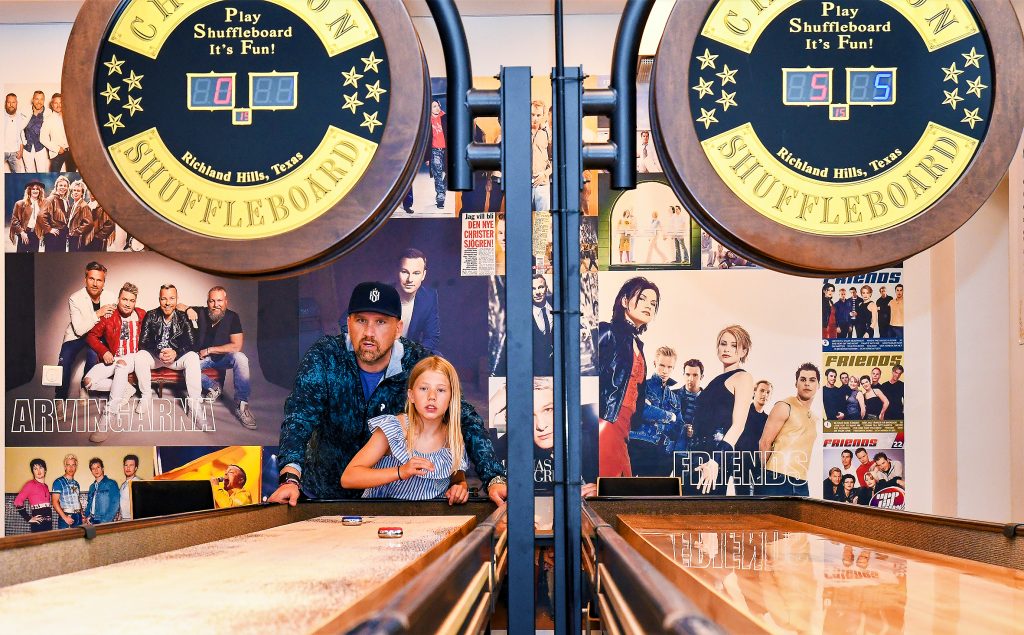
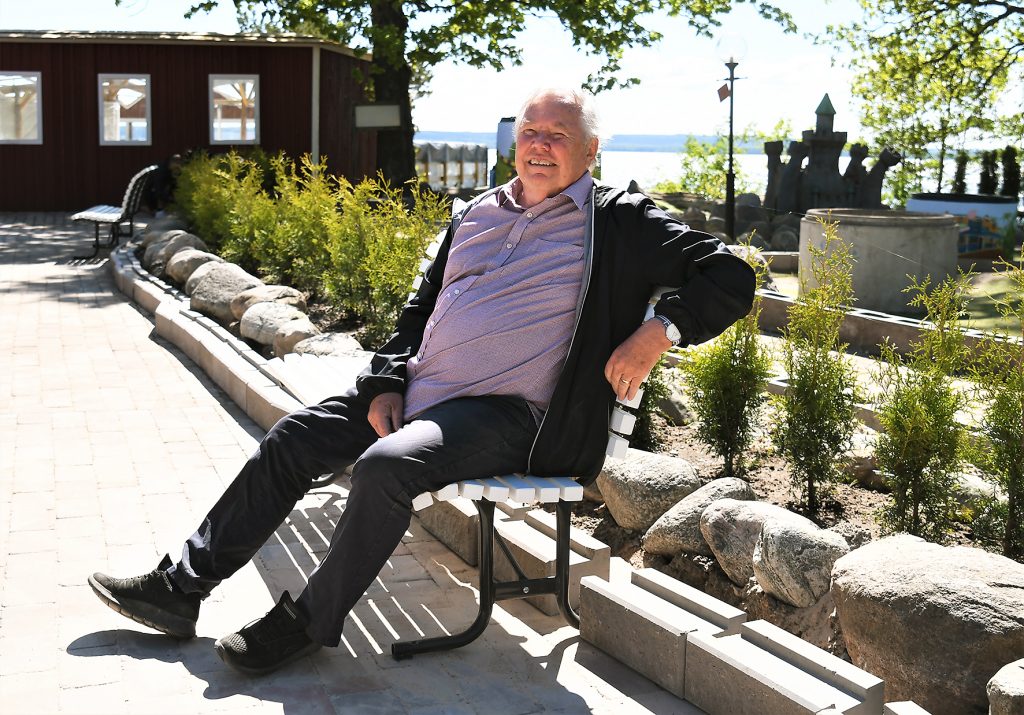
There is always something new on offer at the Ursand campground 3 km outside of Vänersborg.
This year everyone can go for a dance on Tuesdays from mid-June. There will be dancing every Tuesday and not just any kind of dance.
-We offer top orchestras like Lasse Stefanz and Streaplers throughout the whole summer, Bert Karlsson says, who also goes by the well-deserved nick-name “pop music Bert”.
The interior of the conference section largely illuminates the pop music history under the Bert Karlsson era; so it is quite natural that this sort of music is put in the limelight at the facility. The restaurant seats 300 guests.
Takes care of buss transfers
To enable as many people as possible to get to the Ursand campground and the dancing Tuesdays – in addition to the residents already at the campground – Bert is going to arrange for bus transfers to depart from Vänersborg and Trollhättan.
The Ursand campground is one of the best in the country with a large range of activities and with grass pitches for 450 caravans and campervans, and on top of that they also have a large number of cottages that vary in size from 9 to 40 square metres.
-It is important to be able to offer a varied mix of activities for people of all ages, Bert Karlsson says.
Ursand has an almost unique location on the shore of Lake Vänern with a large sandy beach, and also several swimming pools, one with salt water, and water slides, all with water heated to 28° C.
There are many activities for the children like table tennis, volleyball, face painting, kite flying, kubb lawn games and much more.
The campground can also offer a paddle tennis court, a mini zoo, an adventure mini golf course and a canoe rental service.
Hiking trails and bike paths
For the ones who wish to combine beach life with exercising there are also forests and hiking areas in close proximity with trails up to 15 km long, and they make for a wonderful complement.
Ursand has done well during the two years with the pandemic.
-But obviously there will be even more activity now that the restrictions have all been lifted, Bert Karlsson points out.
This year everyone can go for a dance on Tuesdays from mid-June. There will be dancing every Tuesday and not just any kind of dance.
-We offer top orchestras like Lasse Stefanz and Streaplers throughout the whole summer, Bert Karlsson says, who also goes by the well-deserved nick-name “pop music Bert”.
The interior of the conference section largely illuminates the pop music history under the Bert Karlsson era; so it is quite natural that this sort of music is put in the limelight at the facility. The restaurant seats 300 guests.
Takes care of buss transfers
To enable as many people as possible to get to the Ursand campground and the dancing Tuesdays – in addition to the residents already at the campground – Bert is going to arrange for bus transfers to depart from Vänersborg and Trollhättan.
The Ursand campground is one of the best in the country with a large range of activities and with grass pitches for 450 caravans and campervans, and on top of that they also have a large number of cottages that vary in size from 9 to 40 square metres.
-It is important to be able to offer a varied mix of activities for people of all ages, Bert Karlsson says.
Ursand has an almost unique location on the shore of Lake Vänern with a large sandy beach, and also several swimming pools, one with salt water, and water slides, all with water heated to 28° C.
There are many activities for the children like table tennis, volleyball, face painting, kite flying, kubb lawn games and much more.
The campground can also offer a paddle tennis court, a mini zoo, an adventure mini golf course and a canoe rental service.
Hiking trails and bike paths
For the ones who wish to combine beach life with exercising there are also forests and hiking areas in close proximity with trails up to 15 km long, and they make for a wonderful complement.
Ursand has done well during the two years with the pandemic.
-But obviously there will be even more activity now that the restrictions have all been lifted, Bert Karlsson points out.
It took 28 million kronor to save the museum after the bankruptcy
Saab no longer exists – but those who claim the brand is dead exaggerate!
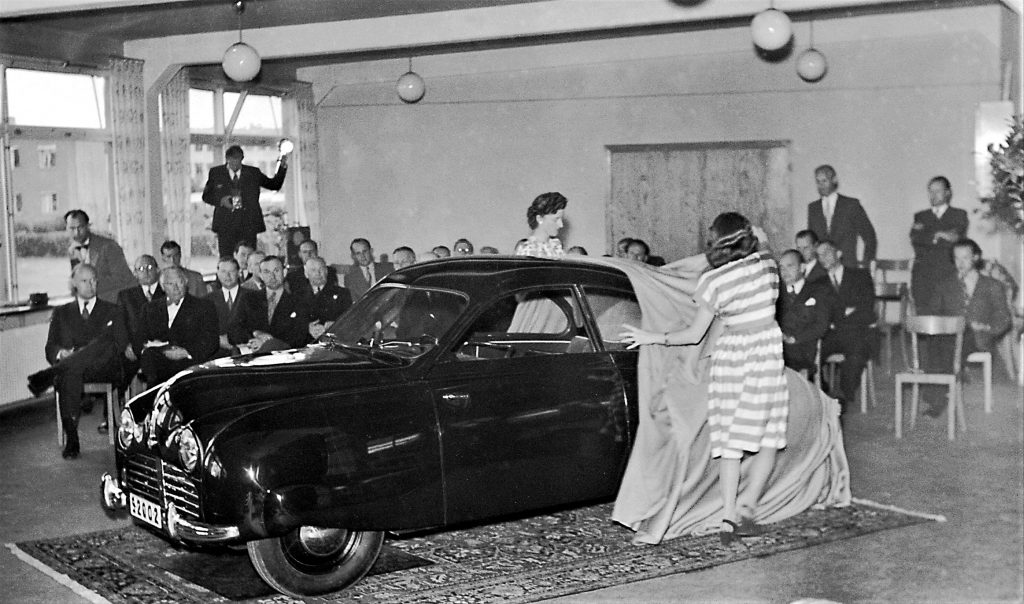
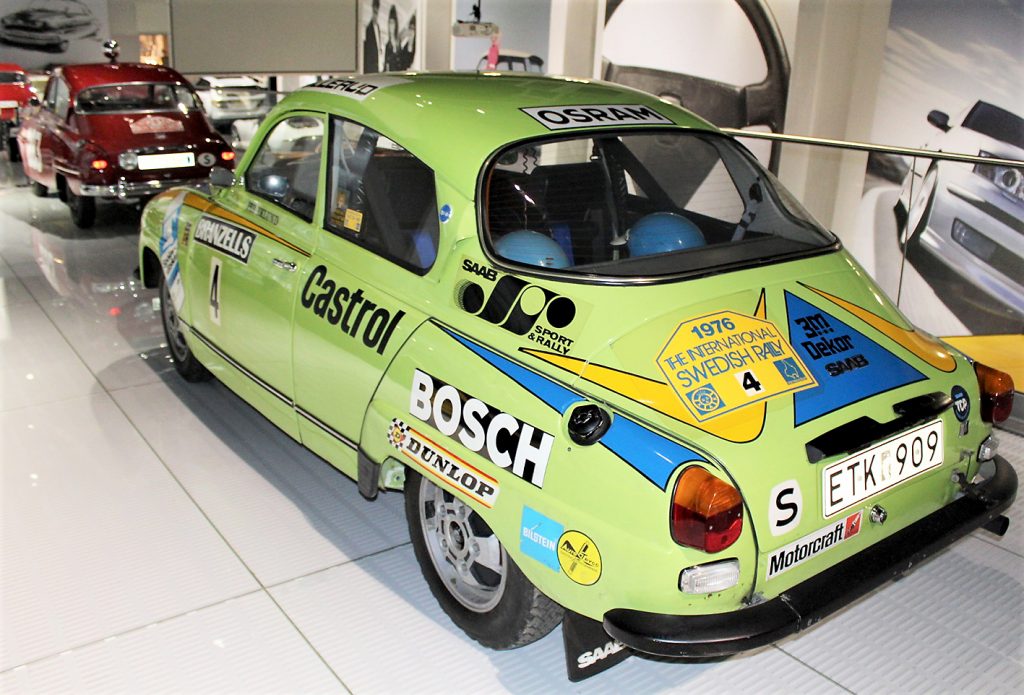
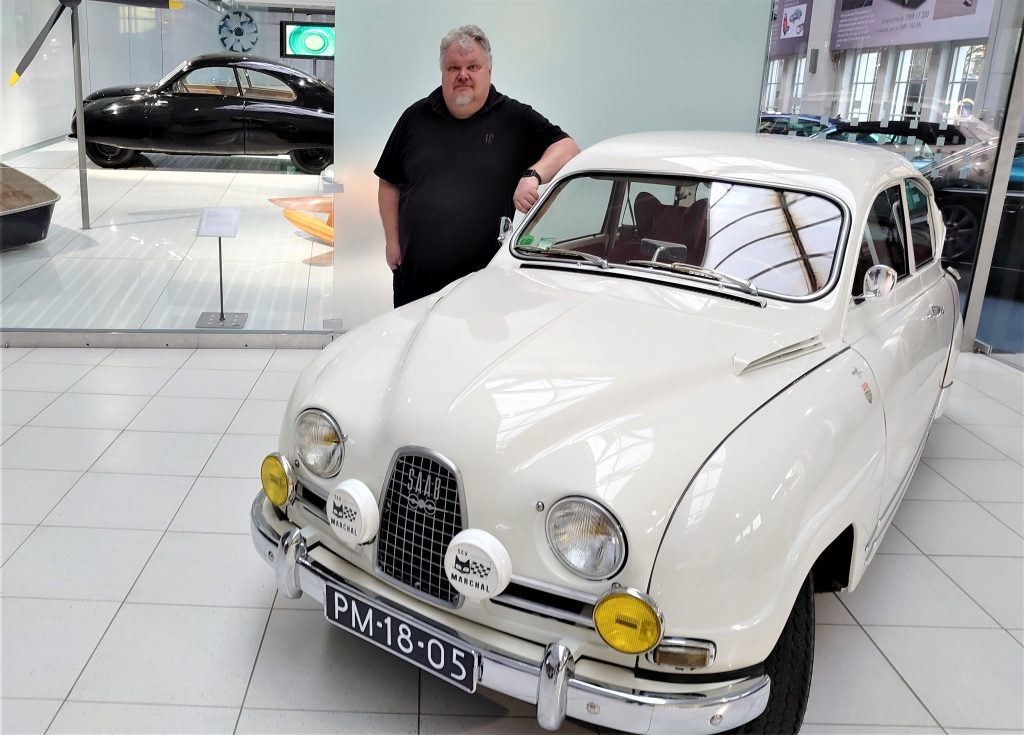
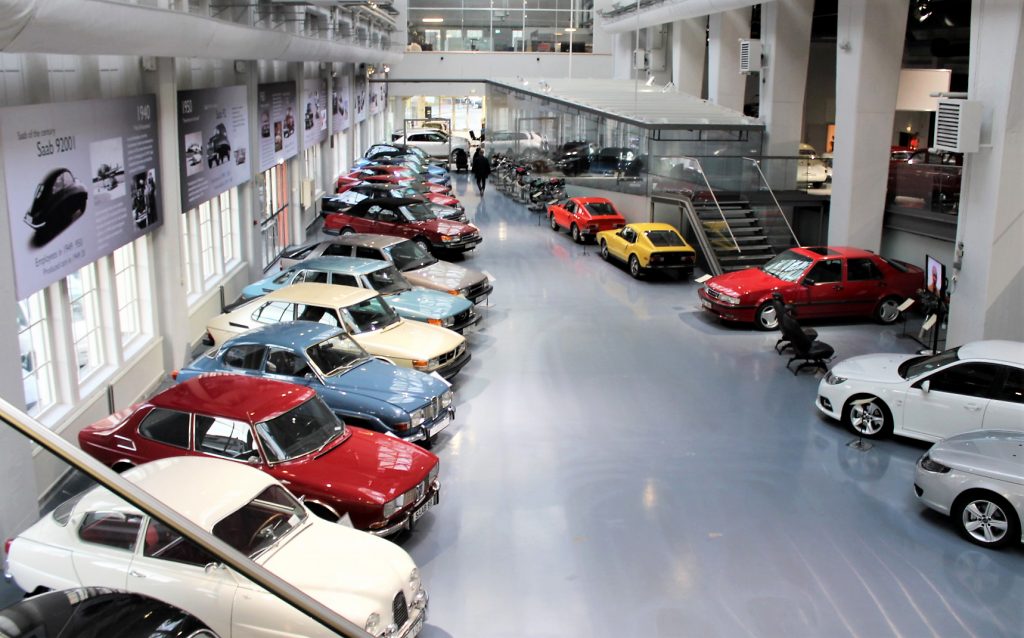
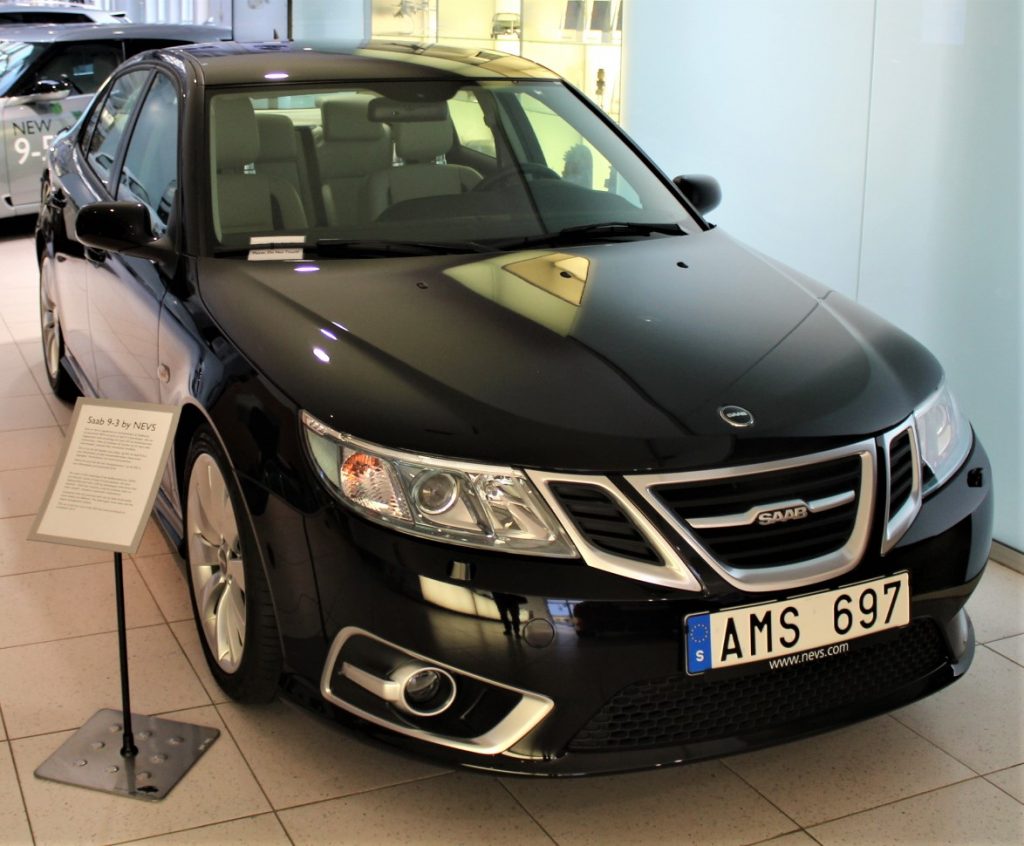
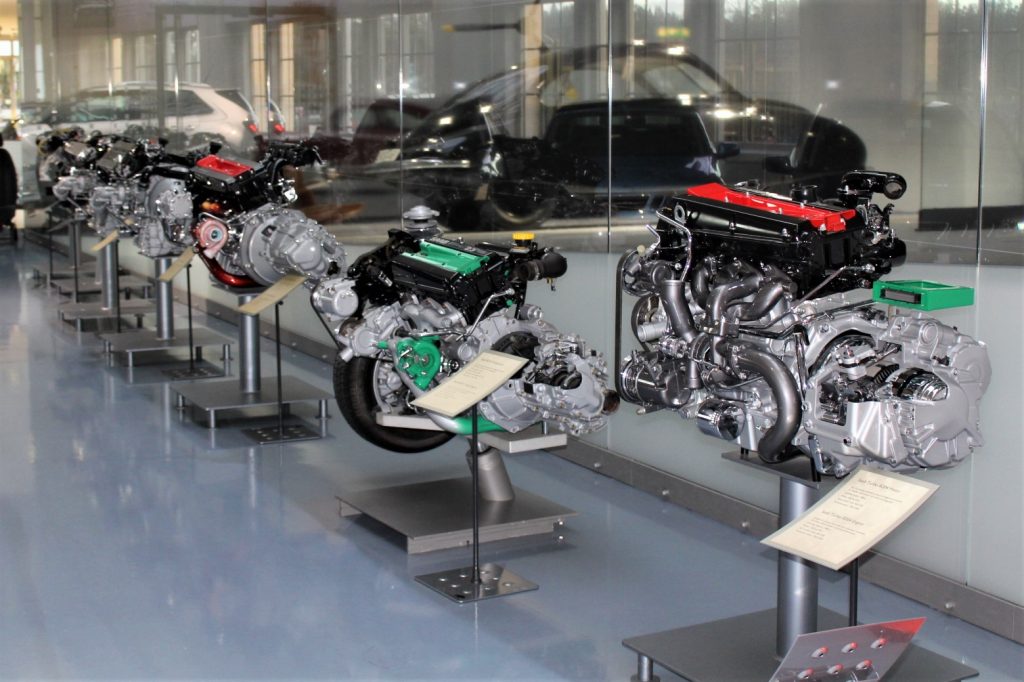
Saab turns 75 this year.
Saab doesn’t actually exist anymore but there is still going to be an anniversary celebration from weekend of the 10-12
th of June and throughout the rest of summer.
The explanation spells the Saab Car Museum or simply the Saab Museum, in Trollhättan.
It is here that Saab lives on. This is where the Saab enthusiasts flock and tourists from all over the world come here. There are many people interested in a brand that no longer exists.
-One would think that the interest would fade. But it’s actually quite the opposite. The Saab Clubs are incredibly strong and they really do appreciate their cars, Peter Bäckström says.
The troublesome pandemic made the museum close for 7 months from November of 2020 to May of 2021. This of course made the situation difficult, but the number of visitors actually rose last summer and now optimism is high.
A unique collection of 140 cars
The museum accommodates a unique collection of around 140 well-polished cars of which about 80 are on permanent display.
The collection ranges from the very first Saab prototype from 1947 along with the famous rally cars of the 1970’s, like the original car driven by Per Eklund when he won the Swedish Rally in 1976 and a replica of the Saab 96 that Erik “Carlsson on the roof” Carlsson won the Monte Carlo Championships in back in 1963. Also on display is the very last Saab car produced by the company NEVS AB in 2014.
Saab has generally been considered a family car and in later years they were also appreciated as a company cars.
When asked to pick his favorite Peter Bäckström is hard pressed to reply.
-But I would have to say Saab Sport from 1964, he says while glancing back at the prototype from 1947.
-That is the mother of all the cars that came after, he establishes.
The exhibition has received a facelift
The exhibition has been further improved during this anniversary year and a time line has been put up in the form of large pictures that cover the entire wall in the big showroom, describing everything from the start of the company to the downfall.
Because Saab fell and she fell hard on the 19
th of December 2011 when the bankruptcy was a fact. The owner also had the full ownership of the Saab Museum which went down with the rest and was to be auctioned off like everything else.
The bankruptcy trustee hired Peter Bäckström to assist with the sales of the museum’s assets. The risk now was that the collection of cars would get split up and that the prospective buyers would place bids on what they wanted. The National Museum placed a bid on the Saab from 1947 in case the museum’s assets would get split up.
-Naturally I felt pretty nervous about the whole thing but it turned into a public bidding affair with countless of interested parties, Peter Bäckström says.
Sold at a price of 28 million kronor
Finally there were 3 buyers left who won the bidding at 28 million kronor, and they weren’t just anybody. The city of Trollhättan offered to pay 14 million kronor, the Saab Group offered to pay 8 million kronor, and finally Marcus and Amalia Wallenberg’s memorial fund that could offer 6 million kronor, a share that was later transferred to the city of Trollhättan.
And with that the museum was saved!
So Peter Bäckström was able to resume his work with the museum where he once began back in 1995 in the museum which was founded back in 1975.
He applauds the city of Trollhättan for being instrumenatl in making sure that the museum still exists. Along with the Region of Västra Götaland’s cultural board the city puts forth 5.5 million kronor every year for the benefit of the operating budget and the rest of it is financed by entrance fees that cover around 40%. To be exact the museum can offer 2.72 full time jobs.
Since it was all settled the value of the cars has risen and appraisers claim that the purchase-price of 28 million kronor has more than doubled.
Back in its glory days in the 1980s SAAB had around 10 000 people on staff. By the time the company went bankrupt in 2011 the figure was 3 300 people.
Have the grief stricken people of Trollhättan been able to move on after the big loss?
-I wouldn’t use the word “grief”. It is more a matter of missing what used to be. The workers that were laid off were able to move on to new jobs even if it means that many need to commute to Gothenburg to work at Volvo, Peter Bäckström says.
Saab doesn’t actually exist anymore but there is still going to be an anniversary celebration from weekend of the 10-12
th of June and throughout the rest of summer.
The explanation spells the Saab Car Museum or simply the Saab Museum, in Trollhättan.
It is here that Saab lives on. This is where the Saab enthusiasts flock and tourists from all over the world come here. There are many people interested in a brand that no longer exists.
-One would think that the interest would fade. But it’s actually quite the opposite. The Saab Clubs are incredibly strong and they really do appreciate their cars, Peter Bäckström says.
The troublesome pandemic made the museum close for 7 months from November of 2020 to May of 2021. This of course made the situation difficult, but the number of visitors actually rose last summer and now optimism is high.
A unique collection of 140 cars
The museum accommodates a unique collection of around 140 well-polished cars of which about 80 are on permanent display.
The collection ranges from the very first Saab prototype from 1947 along with the famous rally cars of the 1970’s, like the original car driven by Per Eklund when he won the Swedish Rally in 1976 and a replica of the Saab 96 that Erik “Carlsson on the roof” Carlsson won the Monte Carlo Championships in back in 1963. Also on display is the very last Saab car produced by the company NEVS AB in 2014.
Saab has generally been considered a family car and in later years they were also appreciated as a company cars.
When asked to pick his favorite Peter Bäckström is hard pressed to reply.
-But I would have to say Saab Sport from 1964, he says while glancing back at the prototype from 1947.
-That is the mother of all the cars that came after, he establishes.
The exhibition has received a facelift
The exhibition has been further improved during this anniversary year and a time line has been put up in the form of large pictures that cover the entire wall in the big showroom, describing everything from the start of the company to the downfall.
Because Saab fell and she fell hard on the 19
th of December 2011 when the bankruptcy was a fact. The owner also had the full ownership of the Saab Museum which went down with the rest and was to be auctioned off like everything else.
The bankruptcy trustee hired Peter Bäckström to assist with the sales of the museum’s assets. The risk now was that the collection of cars would get split up and that the prospective buyers would place bids on what they wanted. The National Museum placed a bid on the Saab from 1947 in case the museum’s assets would get split up.
-Naturally I felt pretty nervous about the whole thing but it turned into a public bidding affair with countless of interested parties, Peter Bäckström says.
Sold at a price of 28 million kronor
Finally there were 3 buyers left who won the bidding at 28 million kronor, and they weren’t just anybody. The city of Trollhättan offered to pay 14 million kronor, the Saab Group offered to pay 8 million kronor, and finally Marcus and Amalia Wallenberg’s memorial fund that could offer 6 million kronor, a share that was later transferred to the city of Trollhättan.
And with that the museum was saved!
So Peter Bäckström was able to resume his work with the museum where he once began back in 1995 in the museum which was founded back in 1975.
He applauds the city of Trollhättan for being instrumenatl in making sure that the museum still exists. Along with the Region of Västra Götaland’s cultural board the city puts forth 5.5 million kronor every year for the benefit of the operating budget and the rest of it is financed by entrance fees that cover around 40%. To be exact the museum can offer 2.72 full time jobs.
Since it was all settled the value of the cars has risen and appraisers claim that the purchase-price of 28 million kronor has more than doubled.
Back in its glory days in the 1980s SAAB had around 10 000 people on staff. By the time the company went bankrupt in 2011 the figure was 3 300 people.
Have the grief stricken people of Trollhättan been able to move on after the big loss?
-I wouldn’t use the word “grief”. It is more a matter of missing what used to be. The workers that were laid off were able to move on to new jobs even if it means that many need to commute to Gothenburg to work at Volvo, Peter Bäckström says.
3 generations of locks a 4th on the way.
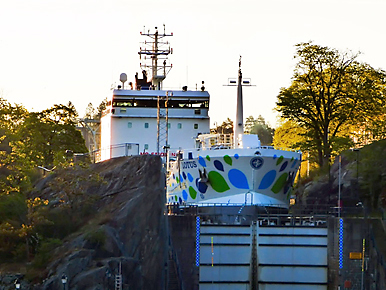
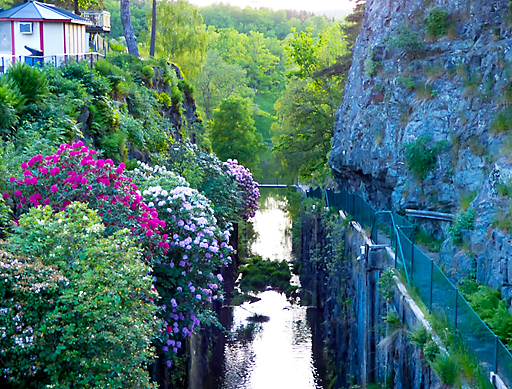
To see water raise 4000 tonne-vessels 32 meters is an experience you carry with you for a long time. The locks of Trollhättan are uniqe in many ways and well worth a visit.
The difference between sea level and the surface of lake Vänern is 44 meters and is climbed by passing throuogh 6 locks. 4 of these locks are located in Trollhättam and raise or lower boats 32 meters. These locks are from 1916 and are on their last legs. Their expected operational time has soon passed and they need to be replaced before 2030. The size and the exact placements of the new locks is something the traffic and maritime administrations are still planing. Final decision lies with the court of land and enviorment. Negotiations and decisions are planned for 2024.
The locks are most busy when all the private boats are crowding up to make their way to the coast or lake Vänern. Many spectators are not only there to watch the boats but also how the boat owners deal with the ropes and the teamwork. A few choice words are certainly traded when a mistake is made in the crew. This was a tourist attraction already during the 19th century when boats went from Gothenburg with tourists that wished to see what some called the eight wonder of the world. The locals came to watch the far traveling, well dressed tourists.
Between 1889 and 1957 there was a Schweizeri ( a typ of cafe ) that served refreshments such as coffee, wine and punch as well as beer and pilsner from Krönleins brewery. When the Schweizeri was demolished, the current Slusscaféet was built in its stead, where you can enjoy all manner of delicacies whilst watching the boats. The cafe is run by Skoftebyns football club that keep their football field only a stone’s throw away.
The price of going through the locks back then we can’t tell you but today it costs 1100 swedish crowns to passing through all 6. The fee is payed at the third lock.
Magnificent historic constructions only get better the older they become.
Already during the viking age ships passed by the waterfalls in Trollhättan. The first stories tell of the Norwegian king Harald Hårdråde who took around 60 longships into lake Vänern to raid. In those days they were moved through gutters, using logs and mud to reduce friction. These are supposedly stilll visible on the western side of the river. There are also remains of two old forts.
The fact that the provincs of Halland and Bohuslän was part of Denmark and Norway up to the mid 1600’s made Göta älv the only way for swedish vessels to get out of the country without being subjected to a heafty toll. Therefore it was planned already during the time of Gustav Vasa to construct a canal between the Baltic Sea and Kattegatt. Sweden’s first canal lock can be seen in Lilla Edet and behind the decision to build it stood Johan III.
Construction took place between 1580 and 1607. Afterwards there were several smaller locks built both succesful and unsuccesful. Only in 1779 was the distance bewteen lake Vänern and Trolhättan sailable thanks to the lock in Brinkebergskulle being completed.
The passage opens.
The 14th of august in the year 1800 was the first time it became possible to pass Trollhättan without having to transfer goods and so the passage between lake Vänern and The North Sea was completed. These locks were technologically advanced for their time and recived a great deal of attention. In 1832 Baltzar von Platen had completed the Göta canal that runs between lake Vänern and The Baltic sea, this made it possible to ship wares straight through Sweden.
The Göta canal and the lock in Lilla Edet could manage larger vessels than the locks in Trollhättan and because of this, a new sluice and new locks were contructed in 1844 parallell with the old. Now all locks from the Baltic to the North sea were equal in size, 35,8 meters between the gates, 7,4 meter wide and a depth at the threshold between the locks of 3 meters.
Wandring around Gamle Dal.
Here the old locks can be viewed and admired. A more scenic area cannot be found for miles around, if you enjoy the combination of history and green scenery surounded by water. Here you can find a place to camly cotemplate the struggles of mankind in order to overcome obstacles. The old retired locks resting next to you.
Furthest down you can find a guest harbor with room for 15 boats. Here you can walk from the Trail of love that winds down from Olidan powerstation with John-Bauer forest on one side and the river on the other. This is also a part of the Pilgrim trail Göta Älv part 9 and is a nature reserve. You can also set our from Slusscaféet or take the car along Åkersbergsvägen. At arrival there are parkings spaces for cars and motorhomes.
On the way you can take a peek into the Canal Museum that houses much information about the years that were spent toiling to build the locks. A 200 year old diving suit and a great deal of boat models among other things. There are many old buildings in the area all painted in similar colors. It’s not due to lack of imaginagion from the tenants rather they are renting from the maritime administration who choses to keep the original beige and dark red colors.
Everything in the area breathes history and you will find many things not mentioned in this text.
The difference between sea level and the surface of lake Vänern is 44 meters and is climbed by passing throuogh 6 locks. 4 of these locks are located in Trollhättam and raise or lower boats 32 meters. These locks are from 1916 and are on their last legs. Their expected operational time has soon passed and they need to be replaced before 2030. The size and the exact placements of the new locks is something the traffic and maritime administrations are still planing. Final decision lies with the court of land and enviorment. Negotiations and decisions are planned for 2024.
The locks are most busy when all the private boats are crowding up to make their way to the coast or lake Vänern. Many spectators are not only there to watch the boats but also how the boat owners deal with the ropes and the teamwork. A few choice words are certainly traded when a mistake is made in the crew. This was a tourist attraction already during the 19th century when boats went from Gothenburg with tourists that wished to see what some called the eight wonder of the world. The locals came to watch the far traveling, well dressed tourists.
Between 1889 and 1957 there was a Schweizeri ( a typ of cafe ) that served refreshments such as coffee, wine and punch as well as beer and pilsner from Krönleins brewery. When the Schweizeri was demolished, the current Slusscaféet was built in its stead, where you can enjoy all manner of delicacies whilst watching the boats. The cafe is run by Skoftebyns football club that keep their football field only a stone’s throw away.
The price of going through the locks back then we can’t tell you but today it costs 1100 swedish crowns to passing through all 6. The fee is payed at the third lock.
Magnificent historic constructions only get better the older they become.
Already during the viking age ships passed by the waterfalls in Trollhättan. The first stories tell of the Norwegian king Harald Hårdråde who took around 60 longships into lake Vänern to raid. In those days they were moved through gutters, using logs and mud to reduce friction. These are supposedly stilll visible on the western side of the river. There are also remains of two old forts.
The fact that the provincs of Halland and Bohuslän was part of Denmark and Norway up to the mid 1600’s made Göta älv the only way for swedish vessels to get out of the country without being subjected to a heafty toll. Therefore it was planned already during the time of Gustav Vasa to construct a canal between the Baltic Sea and Kattegatt. Sweden’s first canal lock can be seen in Lilla Edet and behind the decision to build it stood Johan III.
Construction took place between 1580 and 1607. Afterwards there were several smaller locks built both succesful and unsuccesful. Only in 1779 was the distance bewteen lake Vänern and Trolhättan sailable thanks to the lock in Brinkebergskulle being completed.
The passage opens.
The 14th of august in the year 1800 was the first time it became possible to pass Trollhättan without having to transfer goods and so the passage between lake Vänern and The North Sea was completed. These locks were technologically advanced for their time and recived a great deal of attention. In 1832 Baltzar von Platen had completed the Göta canal that runs between lake Vänern and The Baltic sea, this made it possible to ship wares straight through Sweden.
The Göta canal and the lock in Lilla Edet could manage larger vessels than the locks in Trollhättan and because of this, a new sluice and new locks were contructed in 1844 parallell with the old. Now all locks from the Baltic to the North sea were equal in size, 35,8 meters between the gates, 7,4 meter wide and a depth at the threshold between the locks of 3 meters.
Wandring around Gamle Dal.
Here the old locks can be viewed and admired. A more scenic area cannot be found for miles around, if you enjoy the combination of history and green scenery surounded by water. Here you can find a place to camly cotemplate the struggles of mankind in order to overcome obstacles. The old retired locks resting next to you.
Furthest down you can find a guest harbor with room for 15 boats. Here you can walk from the Trail of love that winds down from Olidan powerstation with John-Bauer forest on one side and the river on the other. This is also a part of the Pilgrim trail Göta Älv part 9 and is a nature reserve. You can also set our from Slusscaféet or take the car along Åkersbergsvägen. At arrival there are parkings spaces for cars and motorhomes.
On the way you can take a peek into the Canal Museum that houses much information about the years that were spent toiling to build the locks. A 200 year old diving suit and a great deal of boat models among other things. There are many old buildings in the area all painted in similar colors. It’s not due to lack of imaginagion from the tenants rather they are renting from the maritime administration who choses to keep the original beige and dark red colors.
Everything in the area breathes history and you will find many things not mentioned in this text.